By Janie Masséglia
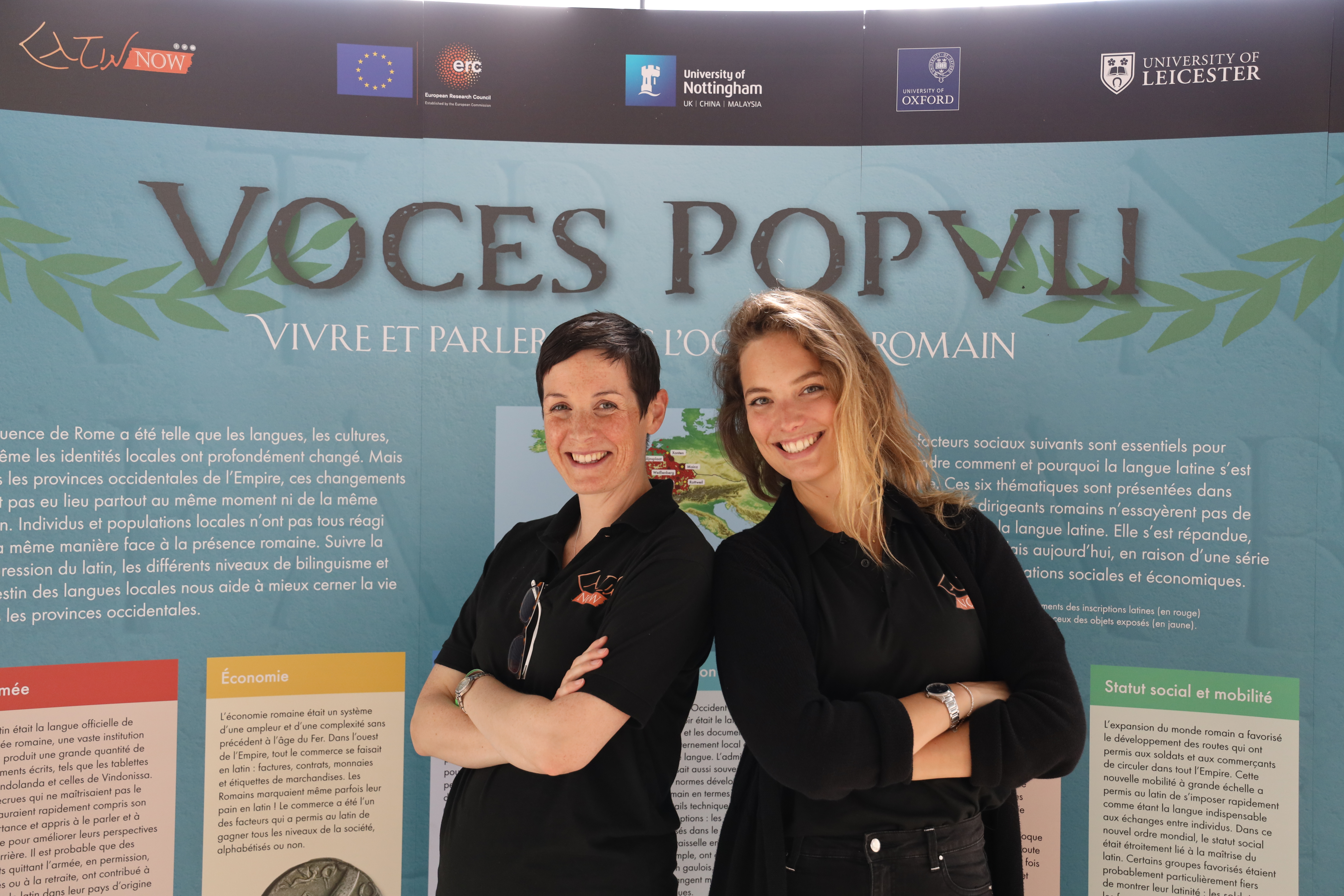
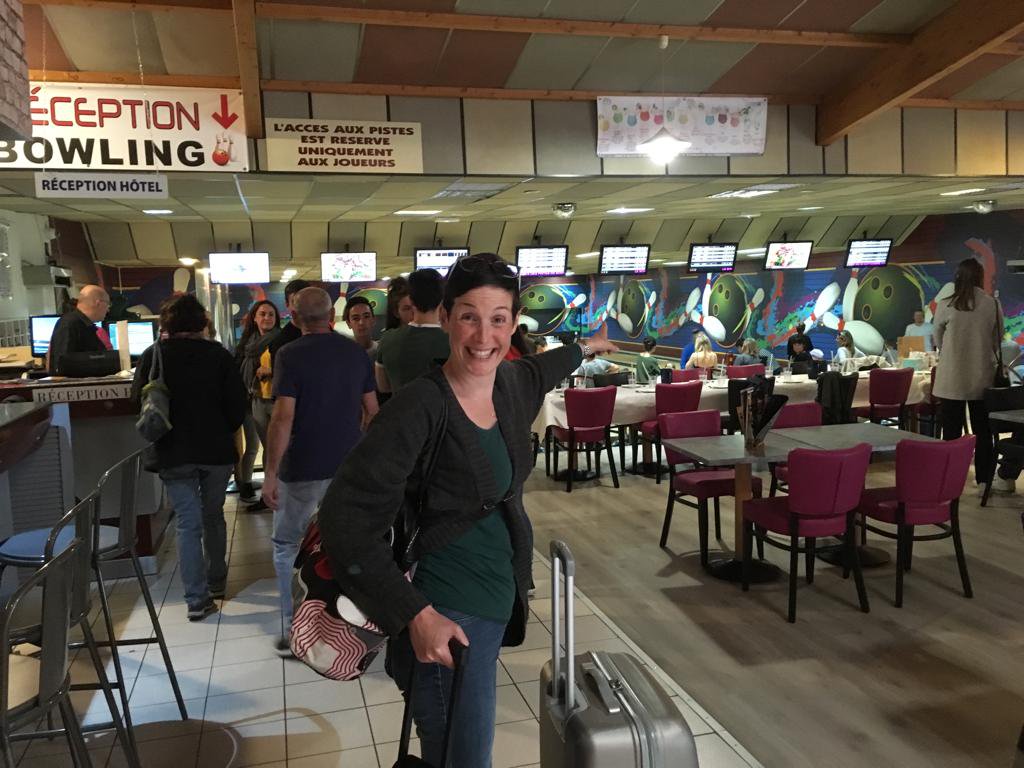
Week 2 of the VOCES POPVLI touring exhibition began when Janie Masséglia and Morgane Andrieu tagged in from Team Spain, meeting up with Alex Wallis and The Van in a France which was ankle-deep in rain and finding their University-of-Nottingham-allocated rooms… in the local bowling alley. It was an unorthodox start.
Millau and La Graufesenque
Our first stop was the picturesque town of Millau, today a community huddled around a pretty central square lined with cafés, but formerly (at the nearby site of La Graufesenque) one of the great centres of pottery production in the Roman Empire. The staff of the Millau Museum were exceptionally warm in welcoming us and, on two days when they would usually be closed to the public, offered us a private tour of their collections, a first look at an extraordinary unpublished inscribed pot, and a generous lunch organised by Solveig Cherrier to which the Classics teachers of the local schools were all invited. These would be the teachers bringing us their students over the coming days, and it was great opportunity to meet them socially first.
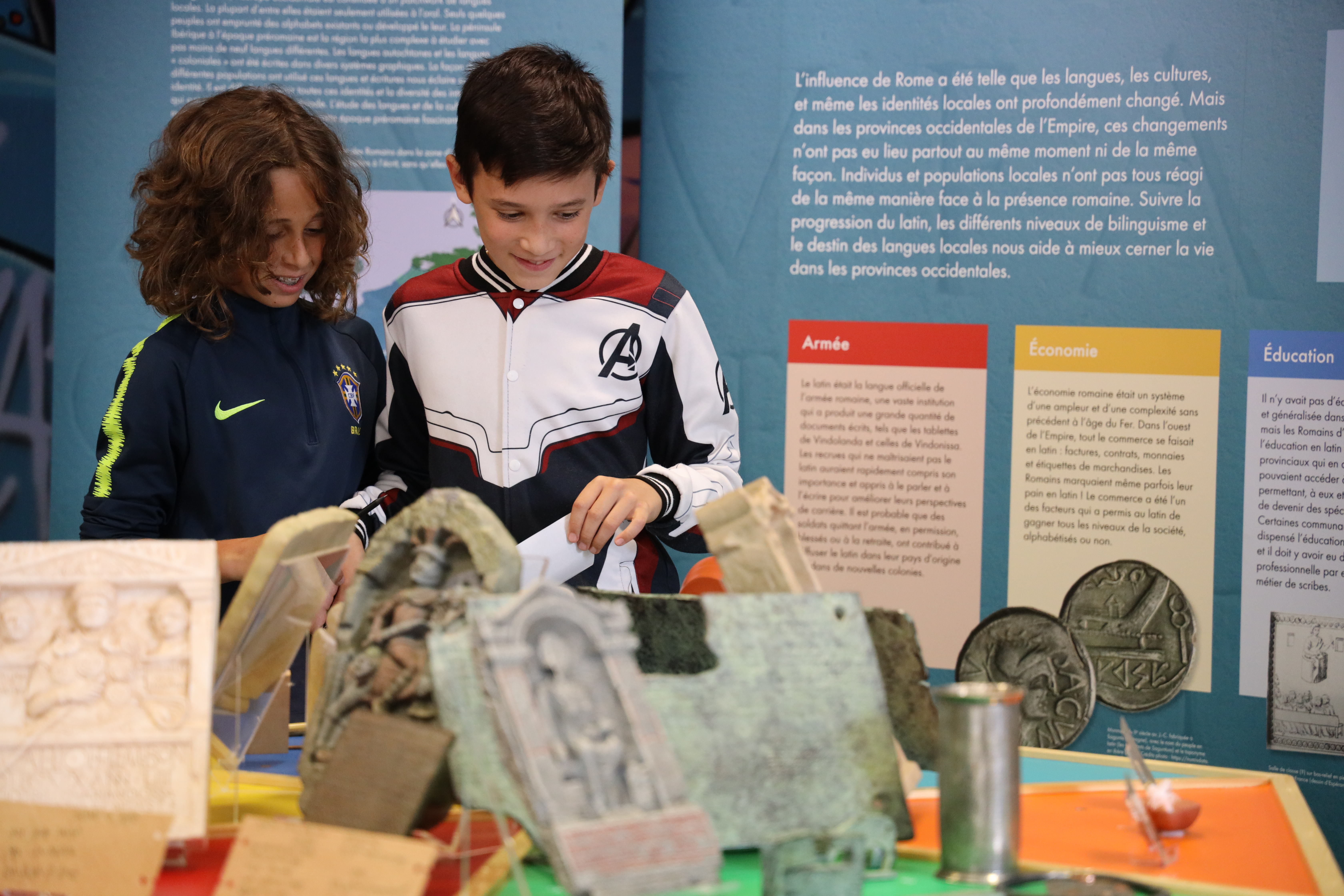
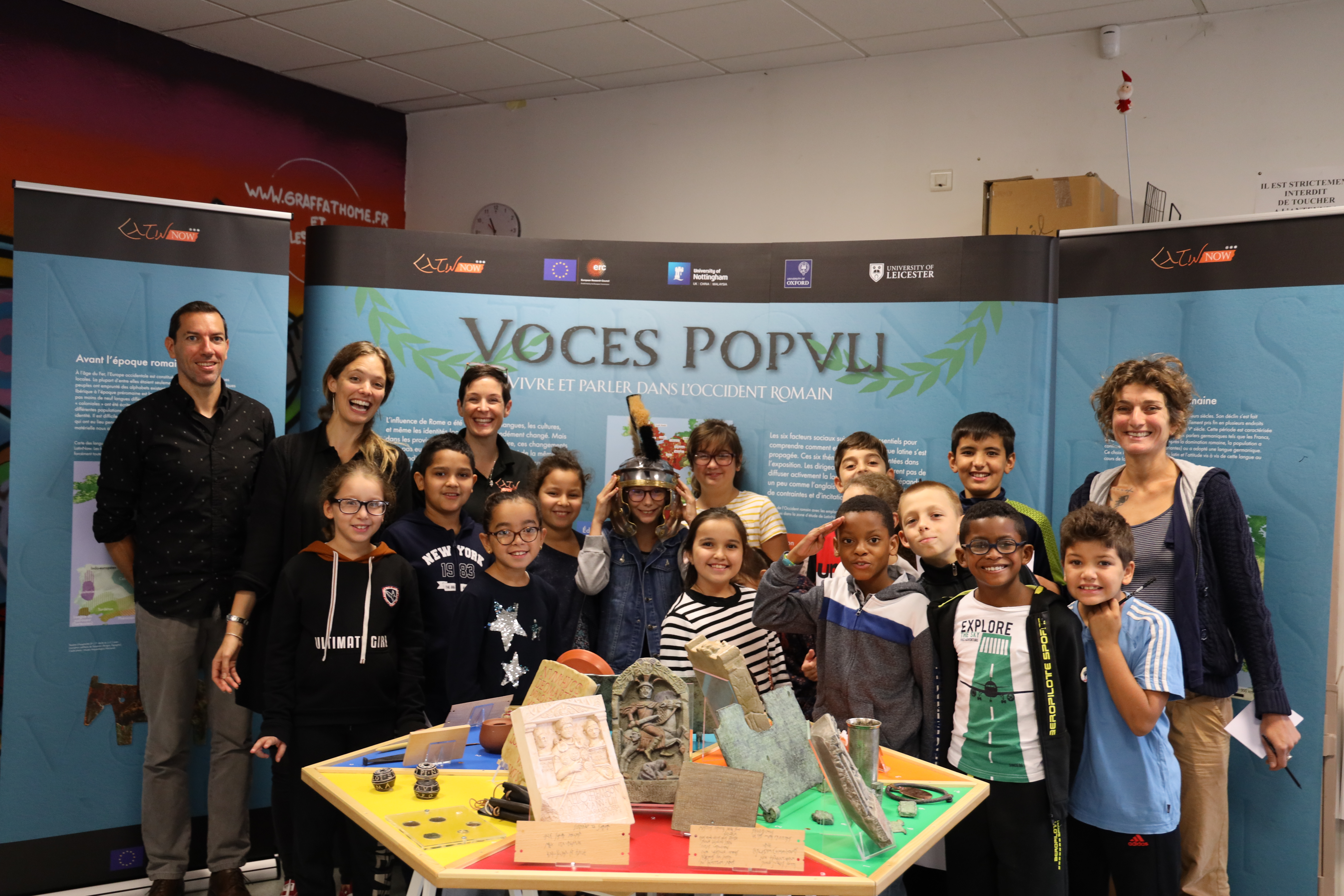
In the colourful surroundings of the local youth centre (itself a former school), we delivered four school sessions – all, perhaps unusually, to Latinists from primary to Lycée age. Here Janie was able to relive her former incarnation as a Classics teacher giving sessions on curses and military messages in Latin, while Morgane offered a special session on her own research into inscribed pottery, letting the students work with real Roman sherds. This friendly and very personal start at Millau was the perfect way for us to bond as a newly-formed team and hone our material before the intimidating prospect of the newly-built Gallo-Roman Museum waiting for us at Nimes.
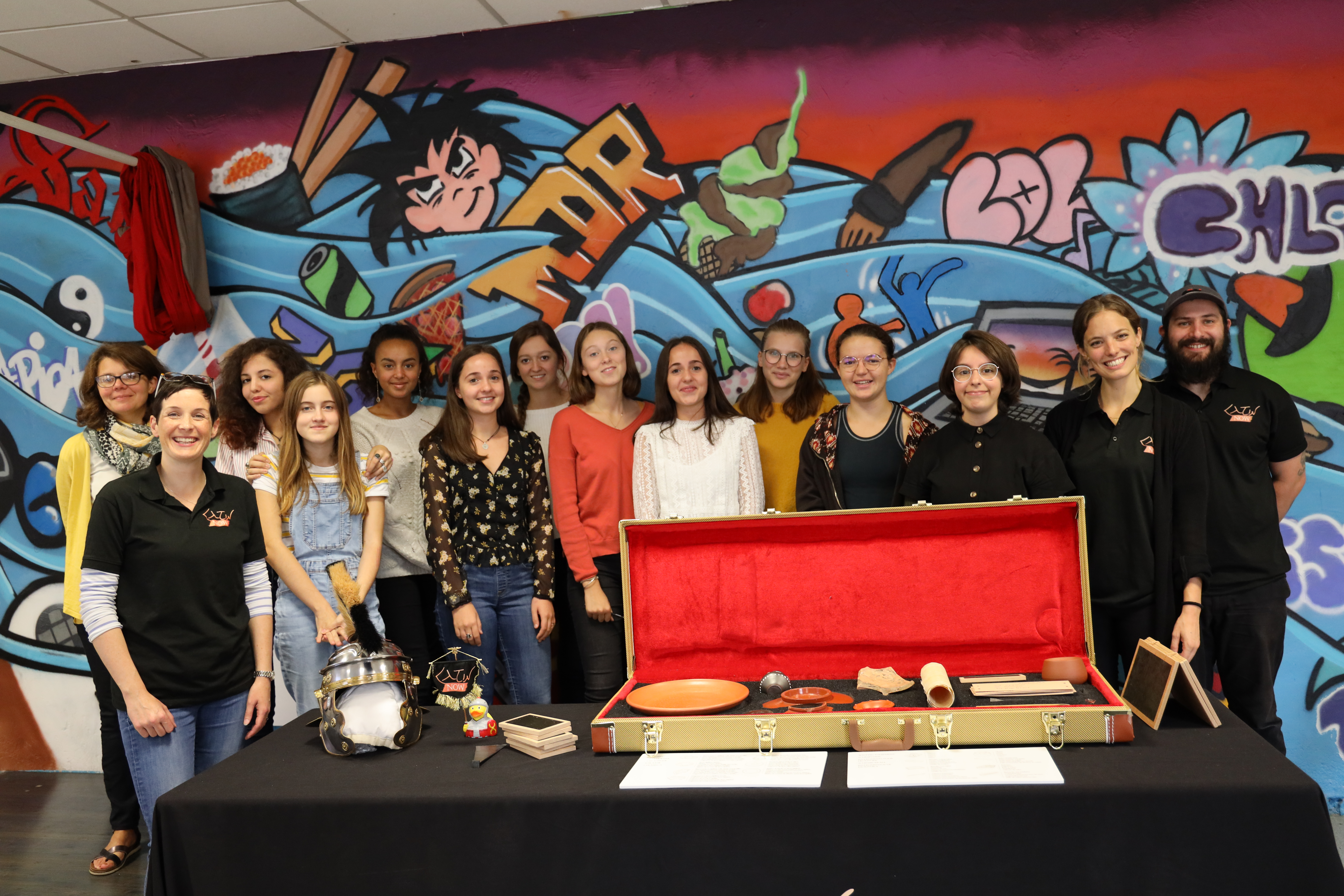
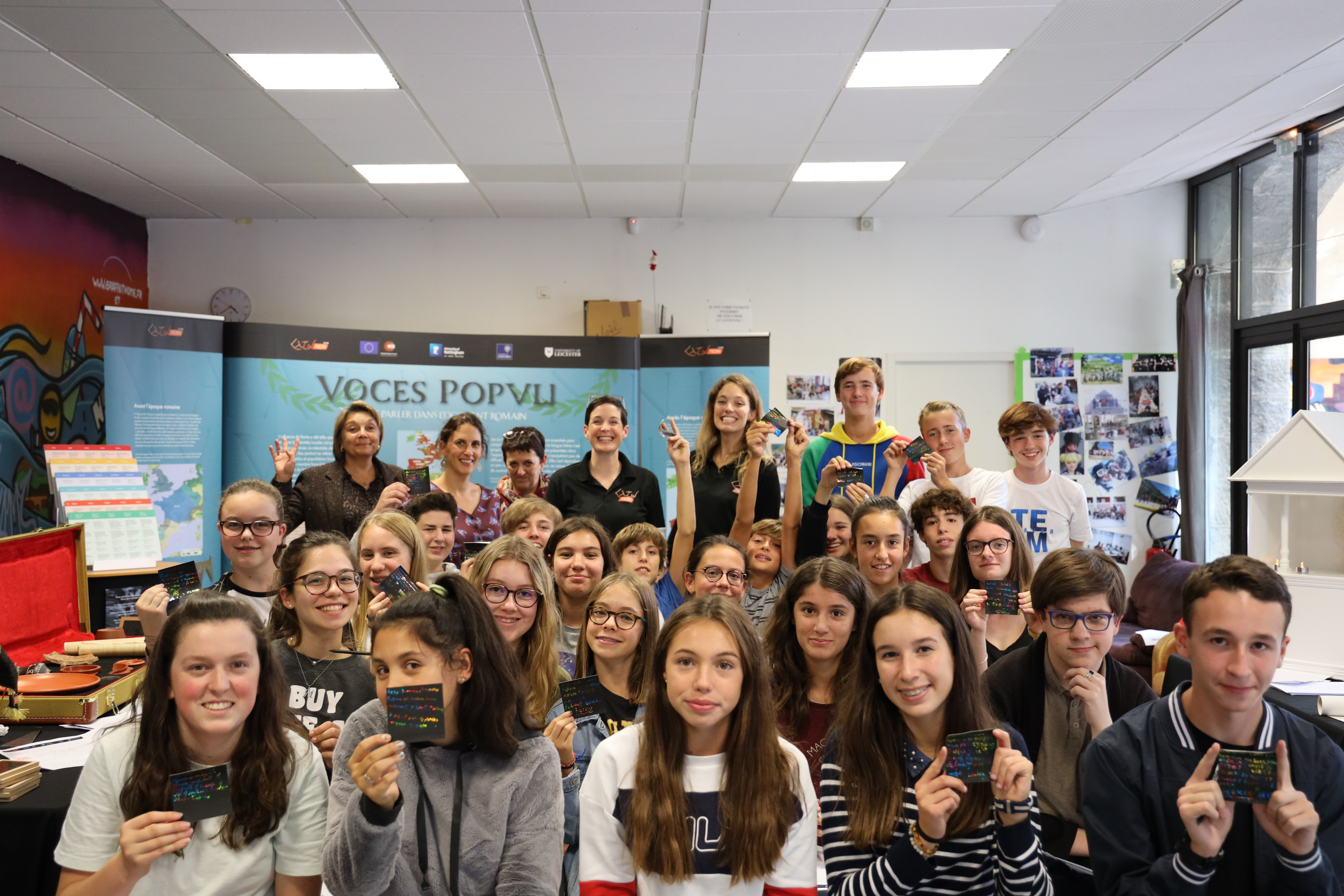
Nimes
As the weather began to improve, Team France completed their first pack-away of the expo, and headed to Nimes, picked out on the road ahead by a rainbow. It was the start of two days of glorious, warm weather. For our first day, Lucile Novellini and the Nimes-team had allocated us a mezzanine room overlooking the new epigraphy galleries. Here, we had our first full day meeting French museum-goers, presenting the project and offering handling sessions.
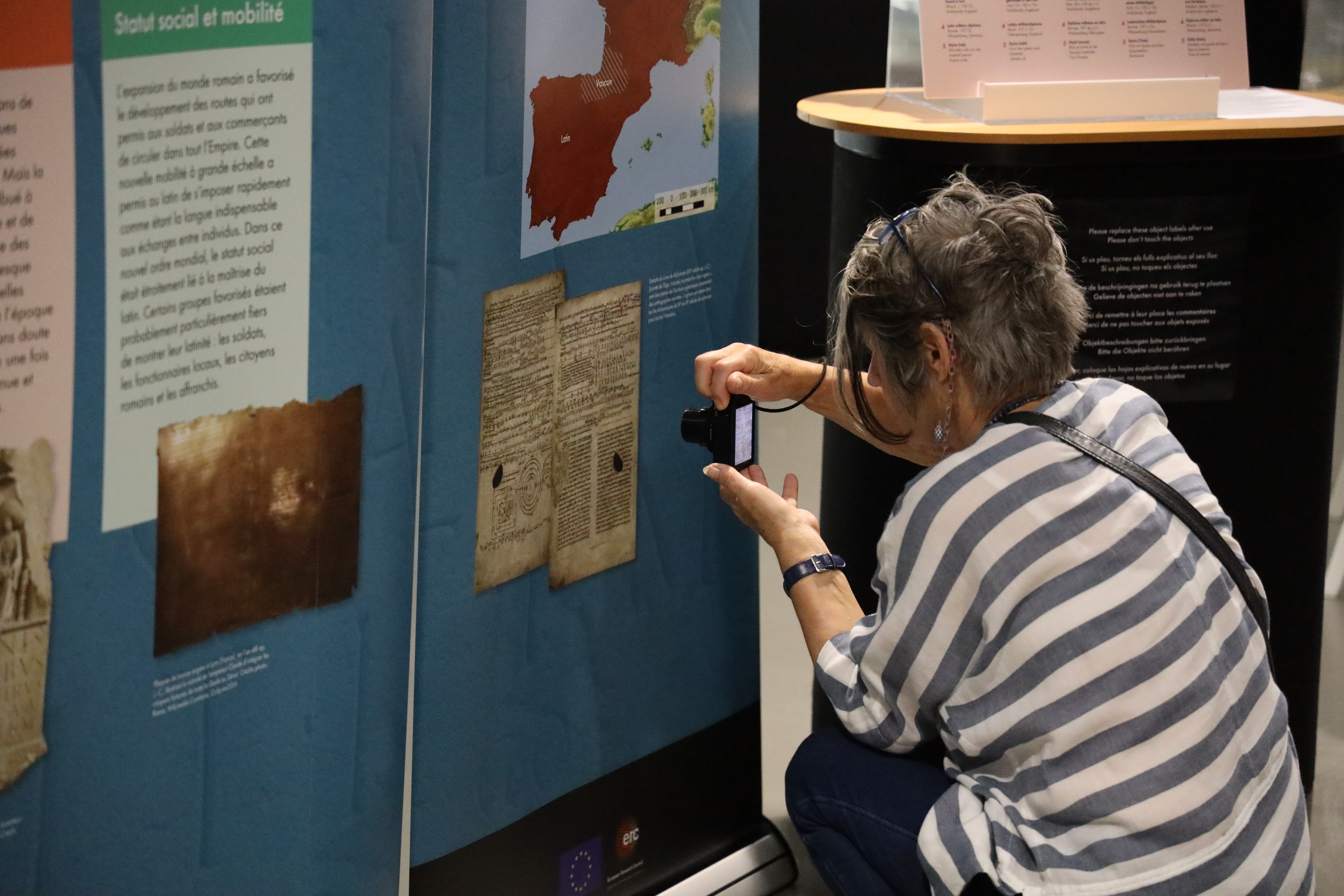
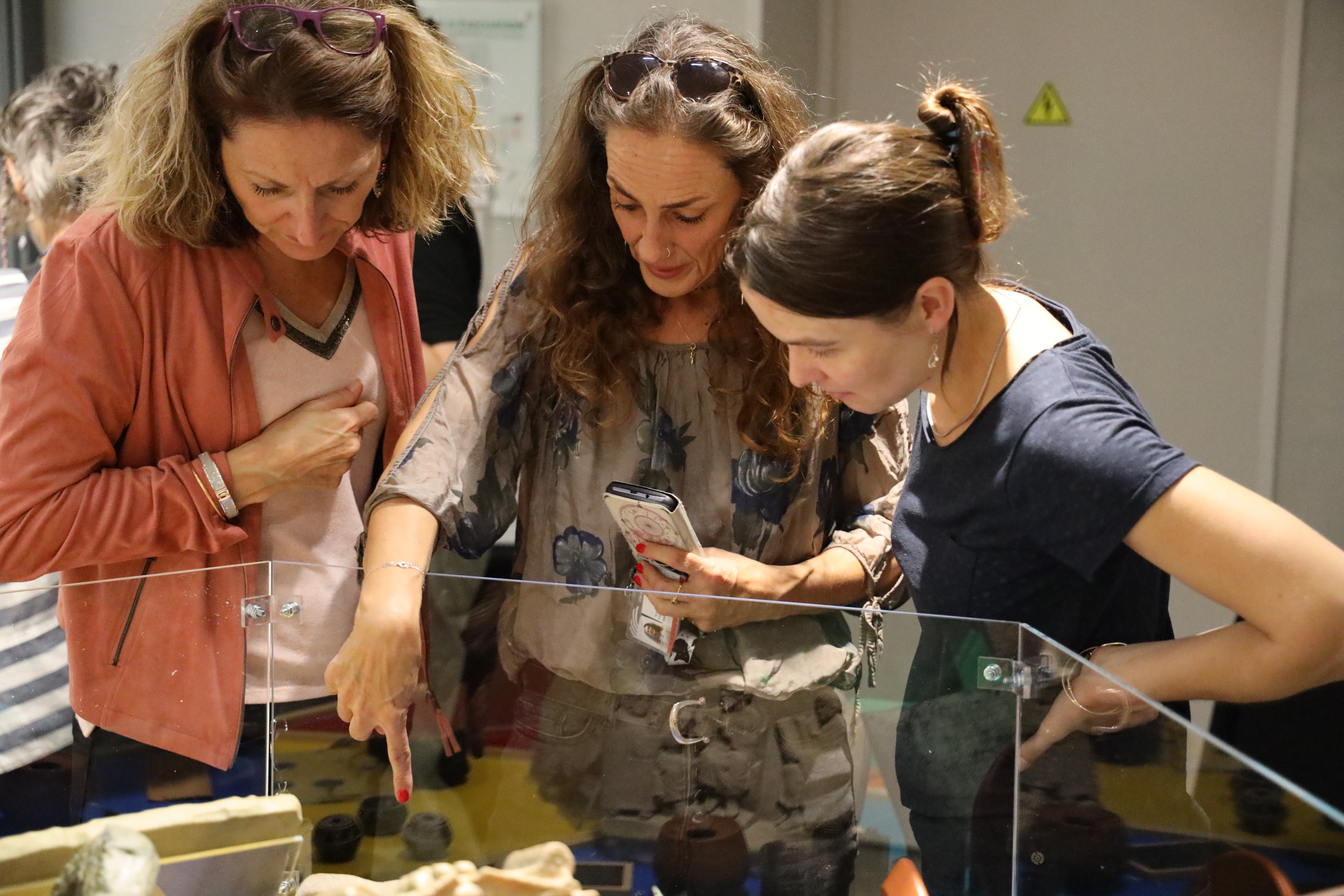
We quickly agreed that, although school group required short bursts of high-octane performance, a sustained seven-hour stretch of visitor engagement, tailoring our material and presentations to the individual visitors, was just as demanding. Morgane took charge of fortifying the team and used her considerable powers of persuasion to procure a lunch-table for us overlooking the ancient amphitheatre, in what we had ben told was a fully-booked restaurant. LatinNow pencils may have changed hands. Propped up by French food and a café gourmand, we headed into the afternoon, and one of the highlights of the week: Janie made a quick presentation of the expo to a group of visitors who had initially come to our mezzanine to admire the view of the gallery below. They stayed an unexpectedly long time chatting with the team, and after touching on topics including the history of Gaulish, the pottery production of La Graufesenque and modern European identity, they left us with a round of applause and some revelatory messages on our ‘papyrus roll’ visitors’ book: this, it transpired, had been a group of the local branch of the members of l’ordre du palme académique out on a day trip. Gulp!
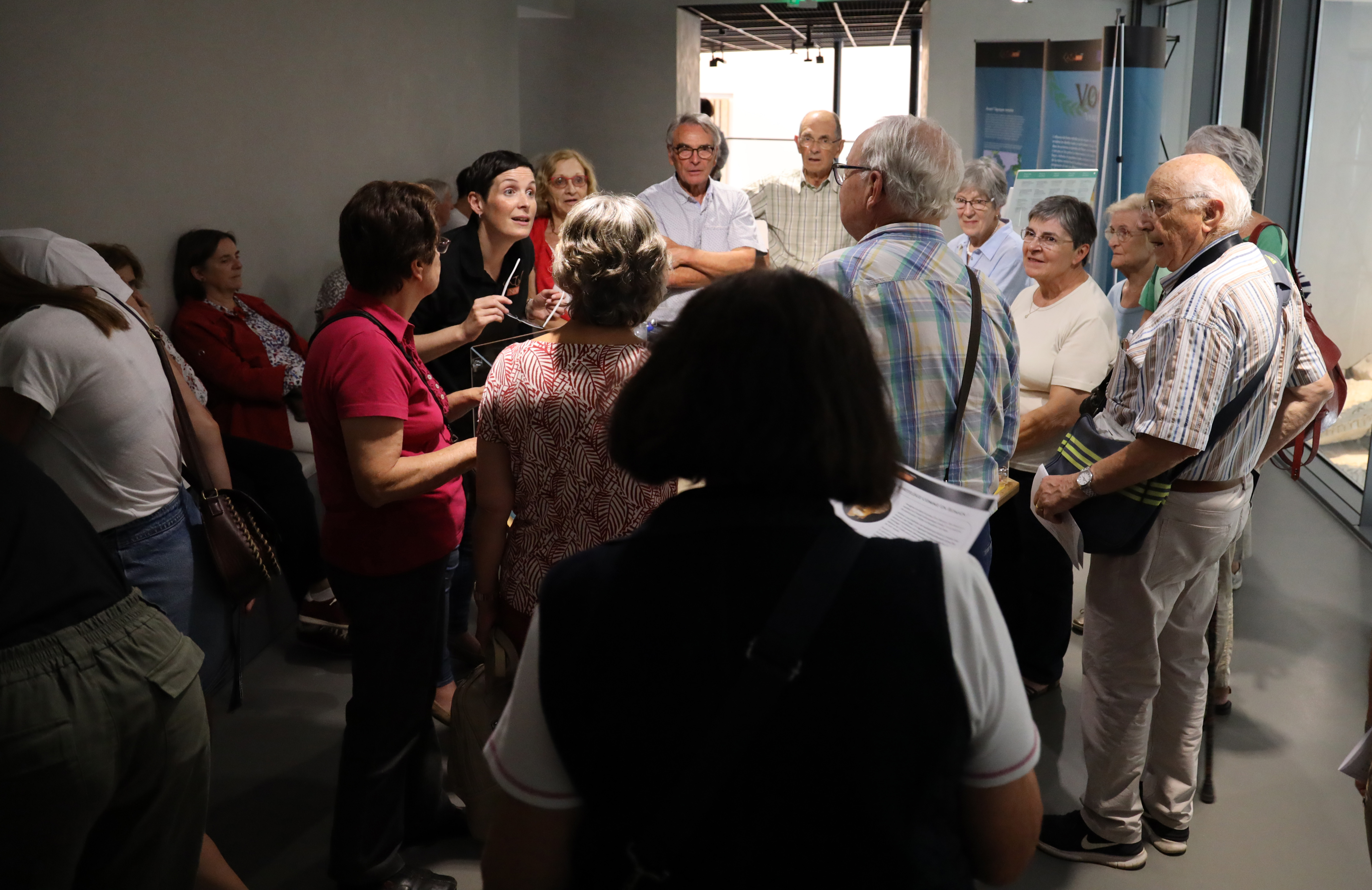
Our second day at Nimes saw us decamp to the Museum’s Education centre, to run both morning and afternoon workshops for local schools. In a previous blog, following our outreach sessions with primary schools in Oxford, we’d observed that children from multilingual households seem to be particularly adept at reading Roman cursive, and often came first in the competition segment of our Military Messages workshop. In multicultural Nimes we saw the same phenomenon again. In one session, we were astonished by a young girl who quietly deciphered our cursive message (using French words but written in the Old Roman Cursive alphabet) in less than 2 minutes. It then transpired that she had only arrived in France from Cuba a month ago, and spoke very little French, so couldn’t even have relied on educated guesses to complete words. She did, however, know 4 other languages, in a variety of scripts. Now there’s a natural-born epigrapher. Several of the students in this same class spoke multiple languages (one little girl was acting as simultaneous Spanish-French translator for her new friend from Cuba) and some of them were very excited to talk to us about it. On her way out, their teacher told us that it was unusual (and nice) for her students to have people take an interest in their multilingualism: for them, she said, speaking other languages was seen as part of what marked them out as immigrants. It was a topical reminder of what we’re really dealing with in the LatinNow project: we could abstract our investigation about the arrival of Latin in Europe to academic questions about usage statistics, word-loans and spelling variants, but we’re also studying the history of cultural difference and adaptability. We’re looking into the history of how people cope with change.
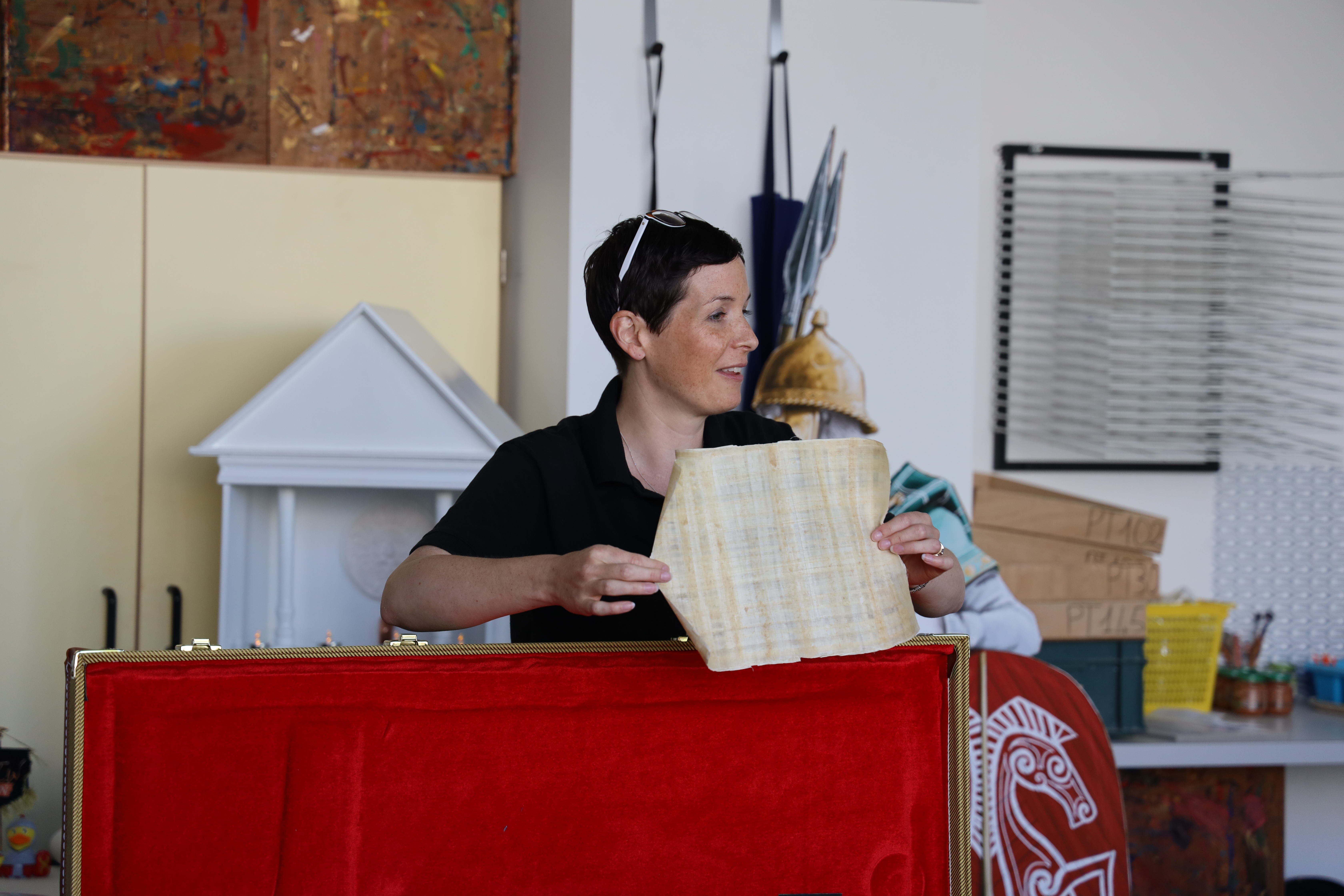
Vienne
Team France’s final stop was at the Museum of Saint-Romain-en-Gal at Vienne, like Nimes a sleek minimalist museum, this time perched beside the Rhone. The museum is also one of the leading centres for mosaic restoration and conservation, and the workshops are fully visible through large glazed ceiling panels. It can’t have been a coincidence, but Alex, our Super-Roadie and tour photographer signed up that very evening for an Open Day for a UK University offering an MA in Historical Conservation (Go Alex!).
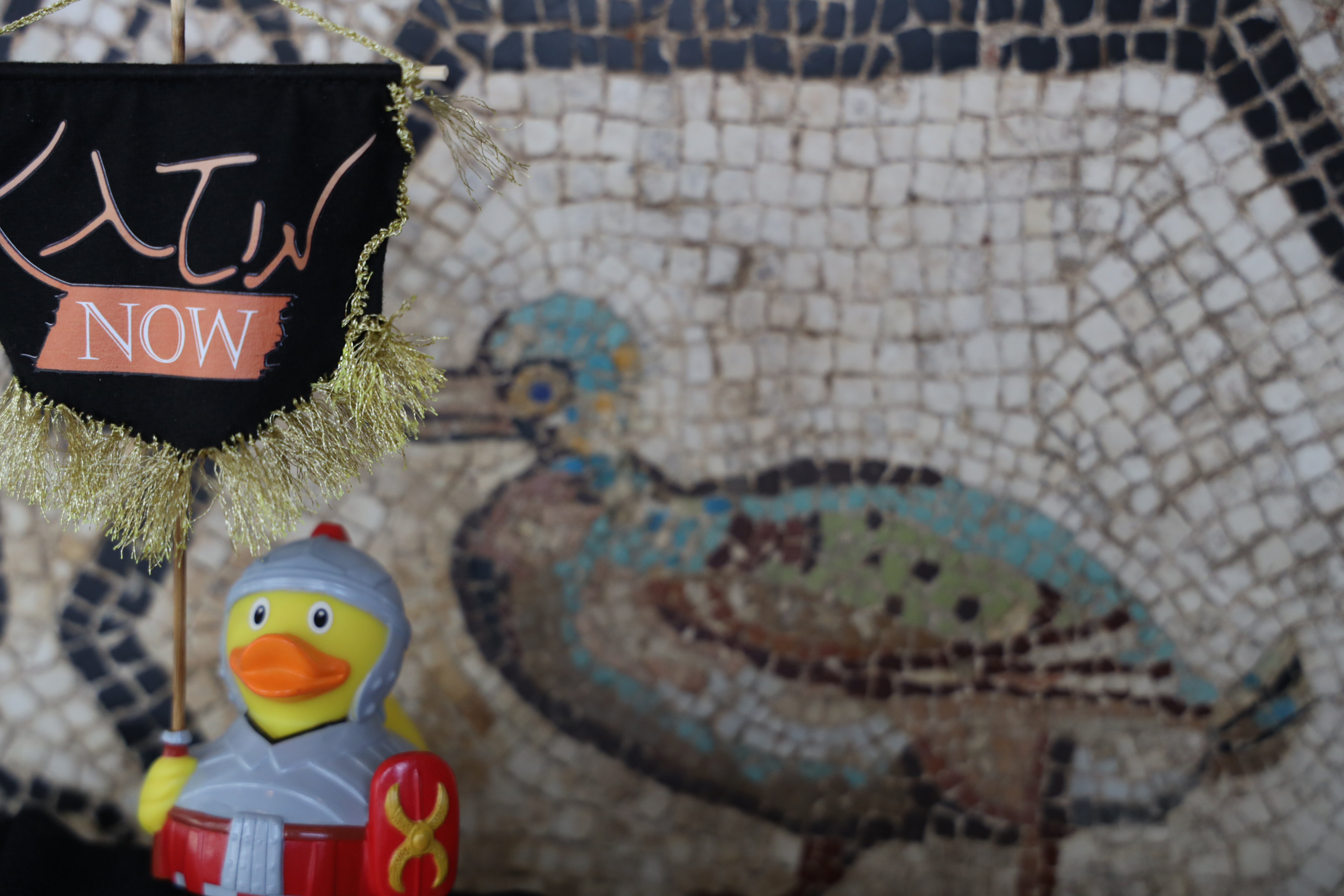
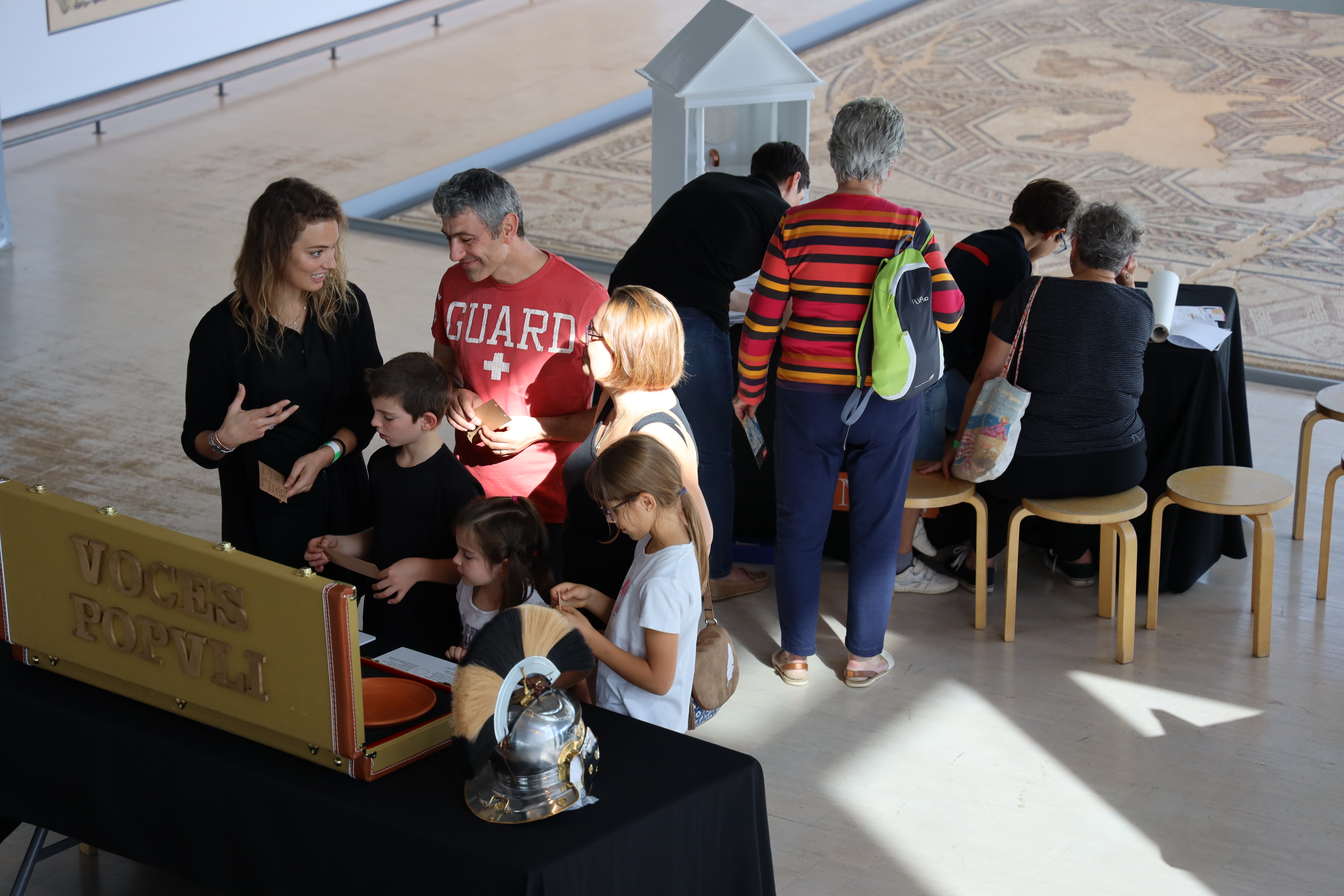
Vienne was to be two whole days of informal visitor engagements in the gallery, with only one school group who had heard about us on social media. We found ourselves set against the dramatic backdrop of a huge mosaic display near the entrance. Here we began to appreciate how our location changed the way we interacted with visitors. At Millau, all our students had been signed-up in advance. At Nimes, tucked away on a mezzanine, we had fewer accidental visitors, most that came in had already ‘committed’ to seeing us. At Vienne, everyone who entered the museum passed our expo, and we had to balance our natural desire to talk to people with the fact that most people wanted to explore the galleries first. We also had the chance to meet visitors and colleagues who had come to the museum for Vinalia, the annual ancient wine festival being held in the grounds, in and around the ancient remains of the site of Saint-Romain-en-Gal. Morgane’s contacts with the CNRS (Centre national de la recherche scientifique) at Lyon got us an invitation to meet Armand Desbat’s team conducting an experimental pottery firing, making drinking vessels which, in the name of research, we found to be fully functional.
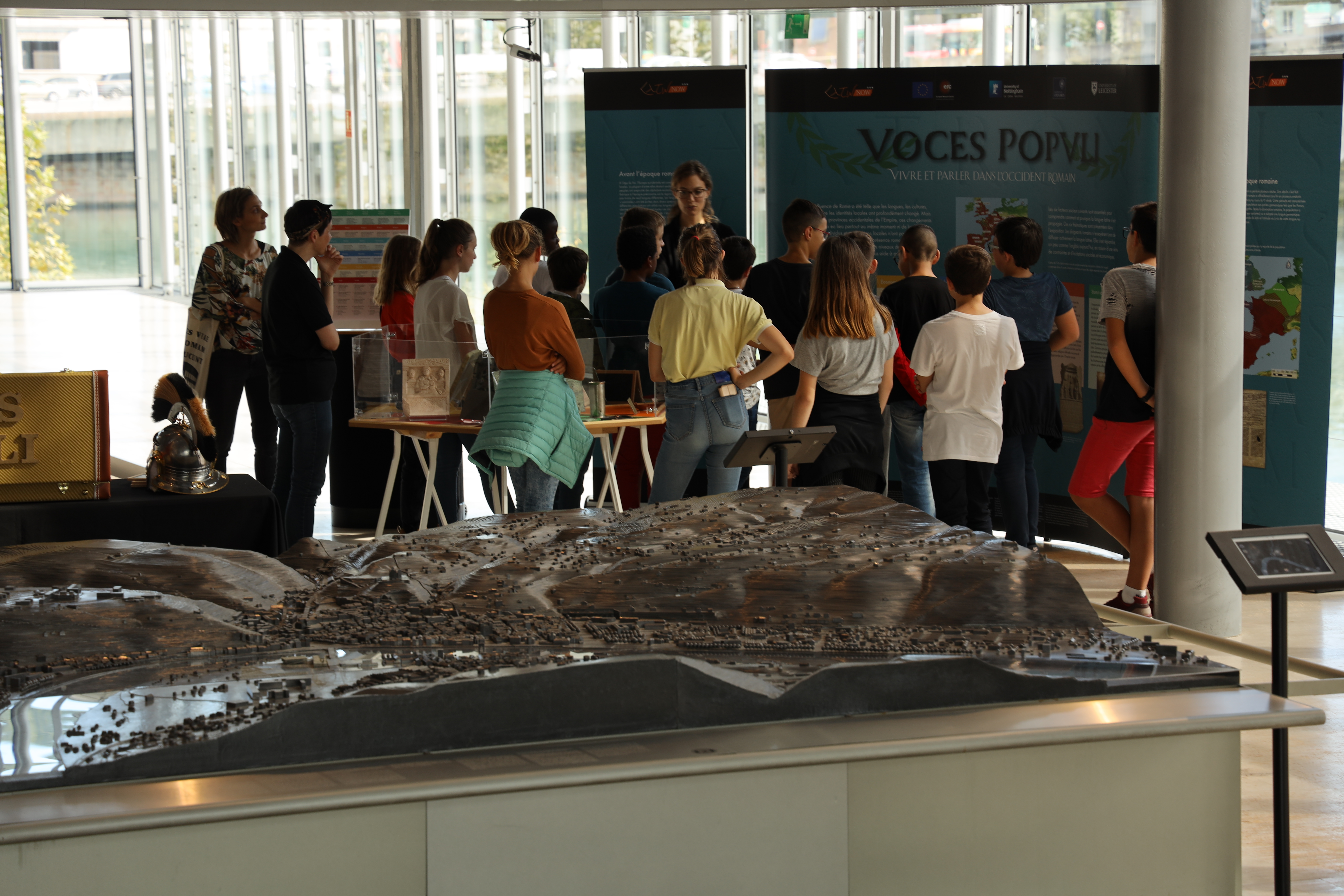

The French leg had entailed three very different stops, with very different requirements. It says something about the goodwill which surrounds the LatinNow project that the three people who comprised Team France (who had never previously met in person) formed a tight team the minute they put on the black polo shirt. We had been incredibly lucky with the warm welcomes we received from our museum hosts, but we were also buoyed up with the kind of camaraderie that comes from French food, French wine, and finding yourselves sleeping in a bowling alley…
NEXT STOP: SWITZERLAND AND BEYOND!